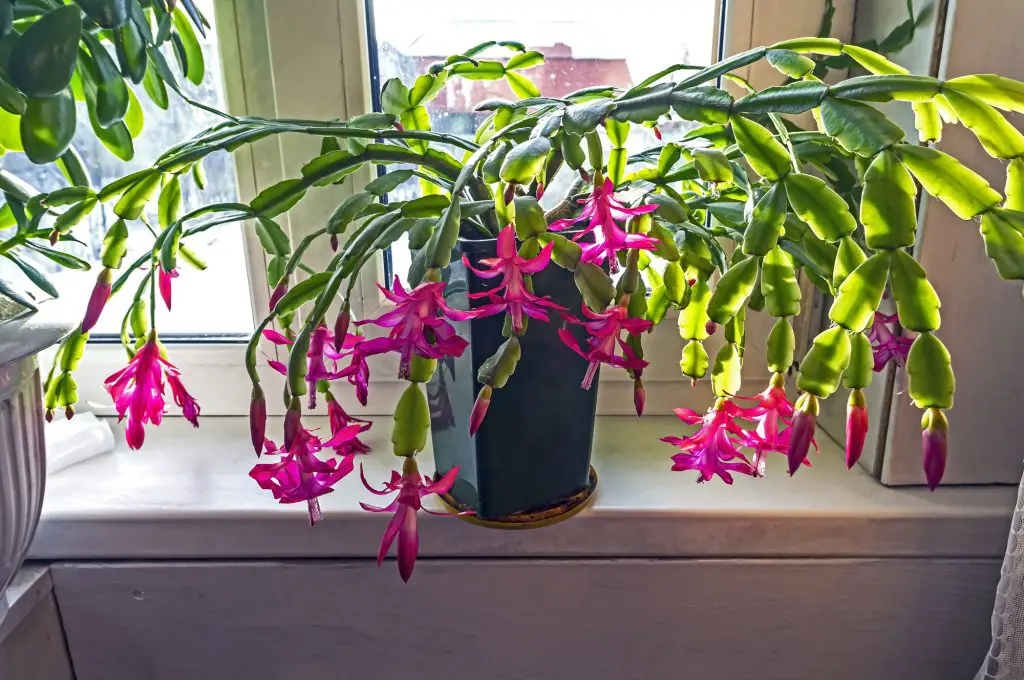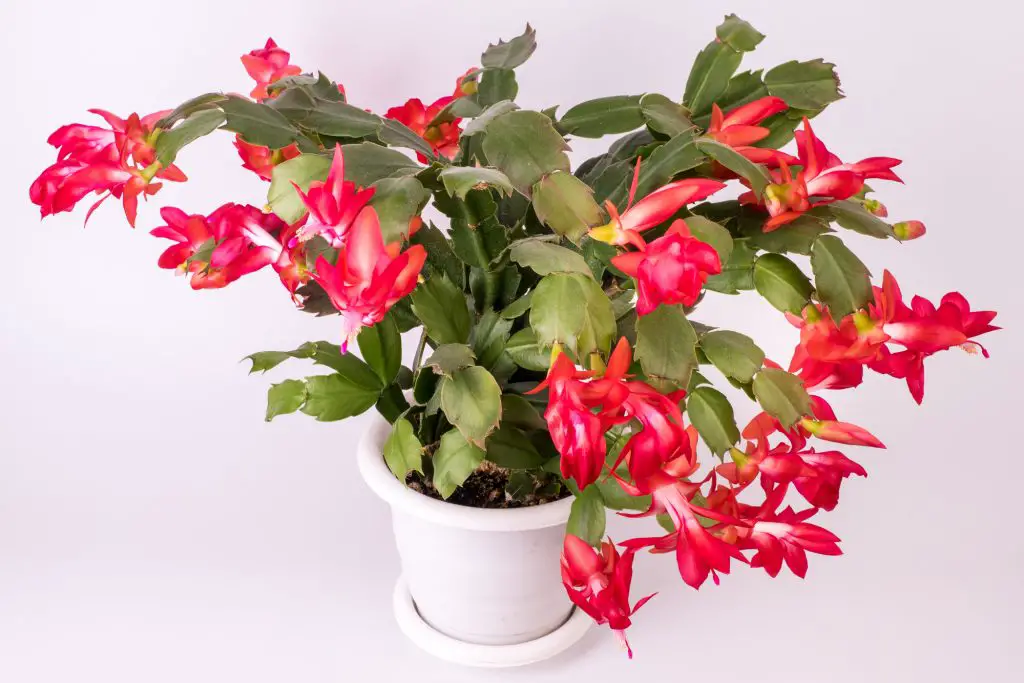A cactus is considered a brilliant addition to your plant collection. The Christmas cactus is a very popular and beautiful houseplant; when it blooms, it produces beautiful tubular flowers that are pink or lilac in color.
Did you know that a Christmas cactus can live up to 20-30 years when properly cared for? But sometimes, your Christmas cactus can become limp due to a lack of water as well as too much direct sunlight.
In this article, we will address numerous fascinating facts relating to a cactus limp as well as provide detailed information as to how you can care for them with the options you have at your disposal.
Why Are the Leaves on My Christmas Cactus Limp?
Let’s take a look at some of the main factors that contribute to this issue:
Overwatering
Overwatering is notoriously known as the main reason why so many houseplants die, as plants surely have a deep affection towards the water. However, overwatering causes them to sit in the water for an extended period of time which stops oxygen from reaching the roots.
Underwatering
Since the cactus has a reputation as a desert plant, many people have the misconception that it does not require much water. However, these ones are not like most cactuses and end up requiring more moist soil than people may expect.
Lack of Sunlight
Just like any plant, the Christmas cactus also requires sunlight to fuel the process of photosynthesis, as, without this influx of energy, they cannot produce the necessary sugar levels needed to keep them alive.
Too Much Sunlight
Much like the underwatering issue, people believe that since it is a cactus, it can probably handle high levels of sunlight regularly; however, that is not the case as too much sunlight can burn the leaves, which may cause certain problems with the growth of the plant.
Lack of Nutrients
Every plant requires micro as well as macronutrients in order to survive in its initial years, and later on, it gets all the nutrients it requires to continue surviving; however, after a while, these nutrients can get depleted, which has adverse consequences.
Extreme Temperatures
The Christmas cactus is a plant that prefers to be in relatively warmer temperatures. However, not on the extreme sides of any spectrum, such as extreme cold or extreme heat, as the cold can cause the water in its tissues to freeze and expand, which damages the cells, and the heat can cause the plant to sear.

Can I Save a Limp Christmas Cactus?
It can be extremely disheartening to find out that the plan that you have been caring for throughout the year and be expecting to bloom does not meet its intended mark, or the growth may be premature. You may have lots of questions and worries about the condition of your plant and whether or not it is salvageable.
A solution may include repotting the plant into fresh soil, removing the limp soil, and placing new soil by taking out as much of the old soil as possible, which may help keep away from this problem occurring again. Even if the soil may not be particularly soggy, repotting and changing up the soil with new fresh soil may help avoid the problem of a Christmas cactus ever having to go limp.
Therefore, to force bloom from your Christmas cactus, which may have been growing prematurely, the optimal conditions for it would be around 50 degrees Fahrenheit and the best month for this temperature would be considered as October. As we look to move forward with the article, we will address more solutions and remedies that are available to solve any particular problems that might exist in the coming future, which will seem fairly easy to just about anyone and will help improve the life expectancy of many houseplants.
How to Revive a Limp Christmas Cactus
To begin with, fixing a limp Christmas cactus consists of determining the real reason for the limpness and labeling it. If it has gone limp, maybe it is underwater, or maybe the dry air in rather heated apartments may make the cactus wither, for which an air humidifier may be a solution.
There are certain methods to revive a limp Christmas cactus, as mentioned below.
Check the Roots for Signs of Root Rot
If there seems to be no damage to the roots, it may mean that your plant will bounce back without any repercussions with a change in the water routine, of course. However, if there seem to be any rotten or mushy roots, they will have to be cut out with a pair of scissors.
Increase How Often You Water
A sufficient intake of water is considered to be necessary for just about any plant, and it can differ from plant to plant. If you find that the soil is dry, then it may be necessary to poke a few holes into the dirt with a skewer as it will help the water get into the deeper roots and reach the compacted soil and smoothen the process of revival.
Increase Sunlight Exposure
As mentioned before, plants require sunlight for them to achieve photosynthesis. You should try to change the location of the plant either temporarily or look for a more permanent solution where the plant may gain more exposure to sunlight.
Decrease Sunlight Exposure
Too much exposure to the sun can also have a detrimental impact on your Christmas cactus as it dries the plant up too much. Therefore, the ideal position for a plant such as this would be to place it in a spot where it can receive indirect sunlight, as the plant usually blooms in relatively warmer temperatures. However, too much heat is not the way to go.
Apply Houseplant Fertilizer
Making sure to apply the houseplant fertilizer once a month during the seasons of spring to fall may cover up its necessary nutrient intake to ensure its survival. Although it is not a nutrients-dependent plant, a good soil composition can ensure a good and healthy life for the Christmas cactus.
How to Prevent Christmas Cactus Leaves From Limping
There are numerous preventive measures that can be taken to nip the problem in the bud. We have taken the liberty to mention some of the most important considerations below:
Repot the Soil as Soon as Possible
By using a 50/50 mixture of soil and sand, you should try to wash all of the old soil off the plant before repotting it. Using the correct soil may be the most important aspect of repotting because otherwise, the effort may just go in vain. This can be very demotivating for the owner.
The Pot Is Too Small
So, choose a pot that may be one or two sizes up from the previous one to avoid any compacting or suffocation of the plant’s roots and soil. This also enables more water to pass through with significant ease. After planting, make sure to place the plant back in its initial position.
Check Temperature & Humidity
The temperature and humidity can play a huge factor for most plants as they require specific environments which enable them to bloom properly rather than prematurely. Therefore, consistency may be a big factor as it is optimal to keep daytime as well as nighttime temperatures which vary around 60-70F.
Look Out for Pests
It is crucial to look out for any pests that lay their eggs close to the soil of the plant, such as spider mites, scales, thrips, etc. As these multiply at an alarming rate, they can create problems quickly. Neem oil may be considered a good remedy for this frustrating problem.
Be Able to Certain Identify Diseases
The most common of them being the stem being rotten or the root, which is often caused by fungus. It is important to keep an eye out for the “blight and necrotic spot viruses,” for which it is necessary to remove foliage to be able to improve the plant’s airflow.
Summary
You now know that there can be many factors that may cause your Christmas cactus to limp. The most common factors are overwatering as well as underwatering, which is truly a detail that seems so trivial, but its significance could not be exaggerated more. Some other reasons include lack of nutrients, high level of exposure to sunlight as well as low sunlight exposure, temperature, humidity, pests, and diseases.
All of these factors play a huge role in determining the life of your precious Christmas cactus and its longevity, and in case of any uncertainty, please feel free to contact the department of plant protection.
Overall, we can safely say that it is very possible to save a Christmas cactus before the problem reaches a point beyond salvation, as the technological advancements and the knowledge that we have available for each and every plant really helps us understand exactly what every plant requires and what we can do to help it.







